Desmond C. Ong
Using Knowledge-Embedded Attention to Augment Pre-trained Language Models for Fine-Grained Emotion Recognition
Jul 31, 2021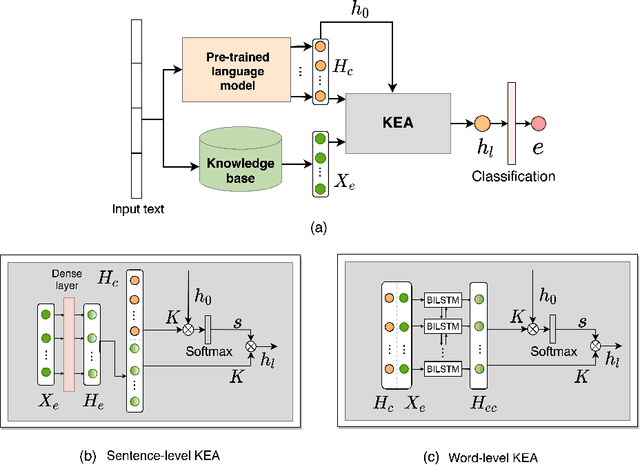
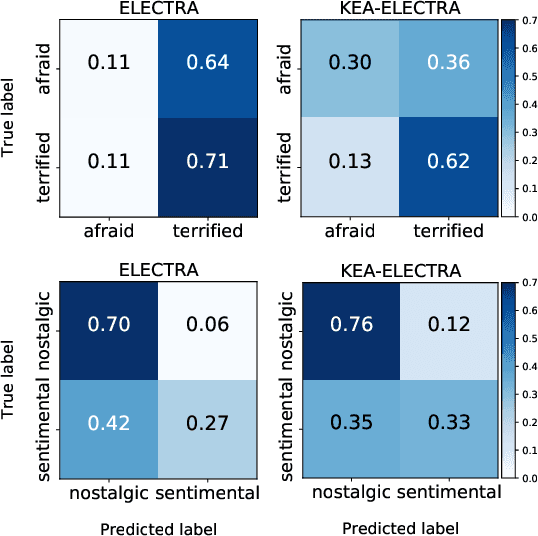


Abstract:Modern emotion recognition systems are trained to recognize only a small set of emotions, and hence fail to capture the broad spectrum of emotions people experience and express in daily life. In order to engage in more empathetic interactions, future AI has to perform \textit{fine-grained} emotion recognition, distinguishing between many more varied emotions. Here, we focus on improving fine-grained emotion recognition by introducing external knowledge into a pre-trained self-attention model. We propose Knowledge-Embedded Attention (KEA) to use knowledge from emotion lexicons to augment the contextual representations from pre-trained ELECTRA and BERT models. Our results and error analyses outperform previous models on several datasets, and is better able to differentiate closely-confusable emotions, such as afraid and terrified.
An Ethical Framework for Guiding the Development of Affectively-Aware Artificial Intelligence
Jul 29, 2021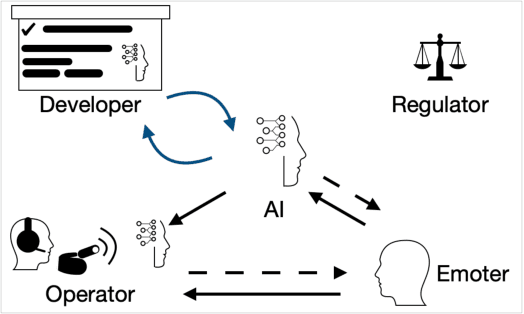
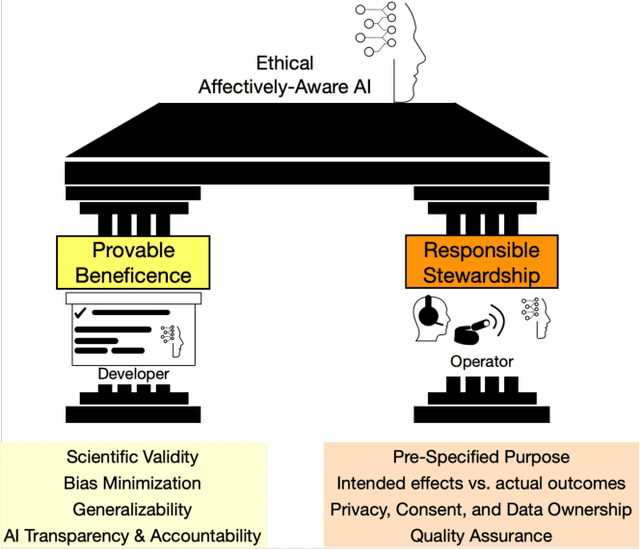
Abstract:The recent rapid advancements in artificial intelligence research and deployment have sparked more discussion about the potential ramifications of socially- and emotionally-intelligent AI. The question is not if research can produce such affectively-aware AI, but when it will. What will it mean for society when machines -- and the corporations and governments they serve -- can "read" people's minds and emotions? What should developers and operators of such AI do, and what should they not do? The goal of this article is to pre-empt some of the potential implications of these developments, and propose a set of guidelines for evaluating the (moral and) ethical consequences of affectively-aware AI, in order to guide researchers, industry professionals, and policy-makers. We propose a multi-stakeholder analysis framework that separates the ethical responsibilities of AI Developers vis-\`a-vis the entities that deploy such AI -- which we term Operators. Our analysis produces two pillars that clarify the responsibilities of each of these stakeholders: Provable Beneficence, which rests on proving the effectiveness of the AI, and Responsible Stewardship, which governs responsible collection, use, and storage of data and the decisions made from such data. We end with recommendations for researchers, developers, operators, as well as regulators and law-makers.
A Systematic Evaluation of Domain Adaptation in Facial Expression Recognition
Jun 29, 2021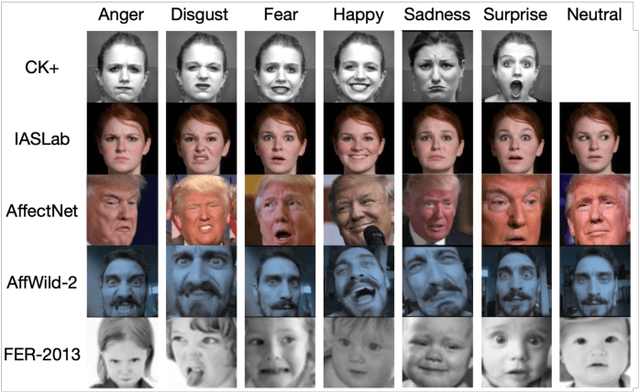
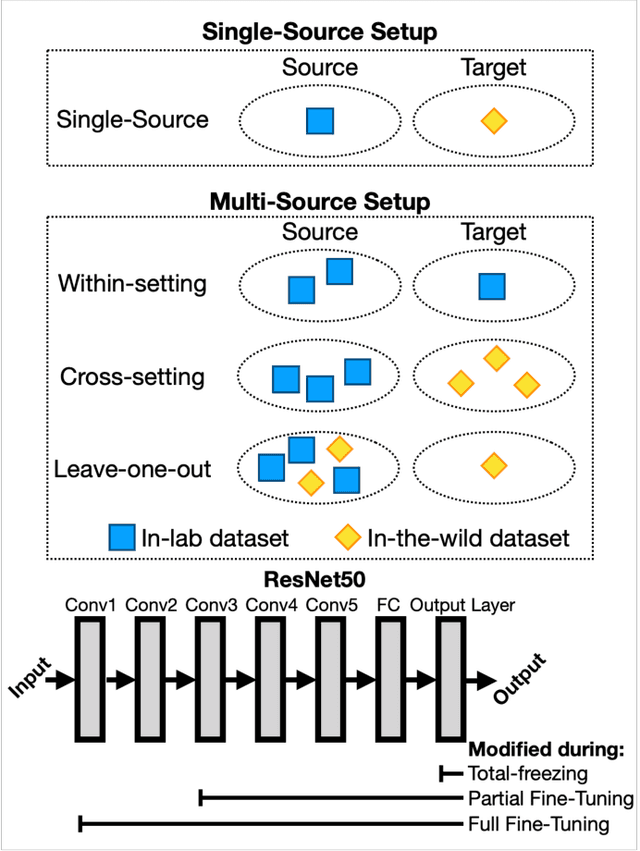


Abstract:Facial Expression Recognition is a commercially important application, but one common limitation is that applications often require making predictions on out-of-sample distributions, where target images may have very different properties from the images that the model was trained on. How well, or badly, do these models do on unseen target domains? In this paper, we provide a systematic evaluation of domain adaptation in facial expression recognition. Using state-of-the-art transfer learning techniques and six commonly-used facial expression datasets (three collected in the lab and three "in-the-wild"), we conduct extensive round-robin experiments to examine the classification accuracies for a state-of-the-art CNN model. We also perform multi-source experiments where we examine a model's ability to transfer from multiple source datasets, including (i) within-setting (e.g., lab to lab), (ii) cross-setting (e.g., in-the-wild to lab), (iii) mixed-setting (e.g., lab and wild to lab) transfer learning experiments. We find sobering results that the accuracy of transfer learning is not high, and varies idiosyncratically with the target dataset, and to a lesser extent the source dataset. Generally, the best settings for transfer include fine-tuning the weights of a pre-trained model, and we find that training with more datasets, regardless of setting, improves transfer performance. We end with a discussion of the need for more -- and regular -- systematic investigations into the generalizability of FER models, especially for deployed applications.
On Explaining Your Explanations of BERT: An Empirical Study with Sequence Classification
Jan 01, 2021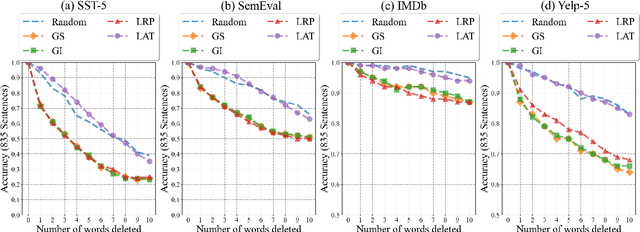
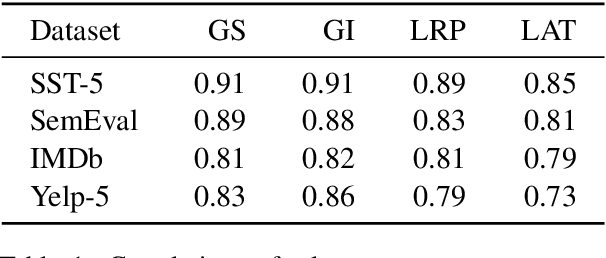
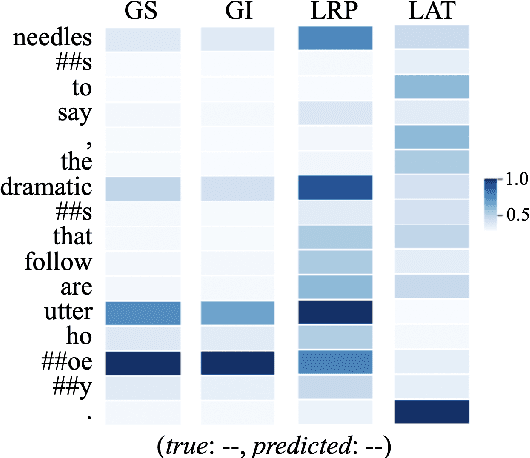
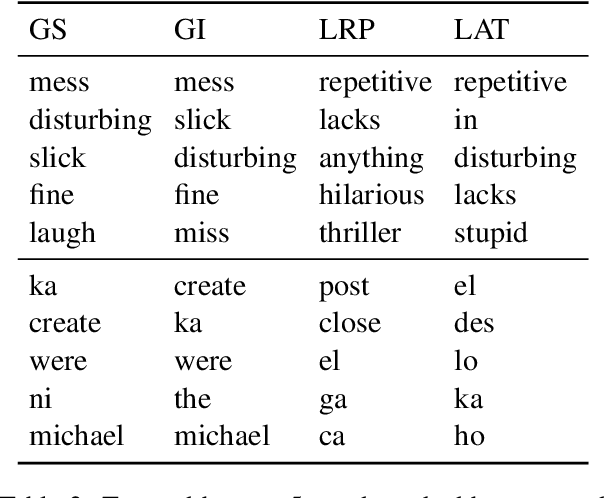
Abstract:BERT, as one of the pretrianed language models, attracts the most attention in recent years for creating new benchmarks across GLUE tasks via fine-tuning. One pressing issue is to open up the blackbox and explain the decision makings of BERT. A number of attribution techniques have been proposed to explain BERT models, but are often limited to sequence to sequence tasks. In this paper, we adapt existing attribution methods on explaining decision makings of BERT in sequence classification tasks. We conduct extensive analyses of four existing attribution methods by applying them to four different datasets in sentiment analysis. We compare the reliability and robustness of each method via various ablation studies. Furthermore, we test whether attribution methods explain generalized semantics across semantically similar tasks. Our work provides solid guidance for using attribution methods to explain decision makings of BERT for downstream classification tasks.
Context-Guided BERT for Targeted Aspect-Based Sentiment Analysis
Oct 15, 2020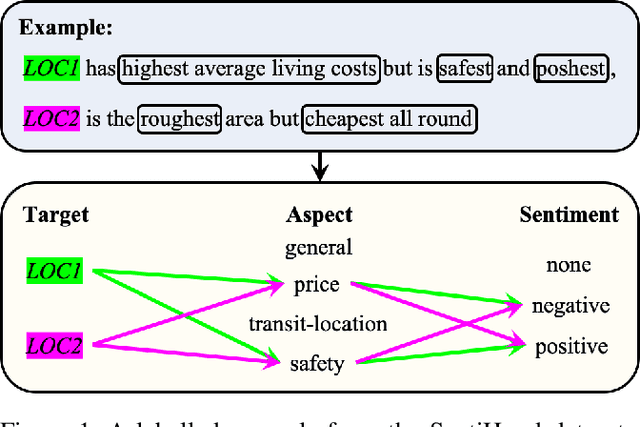
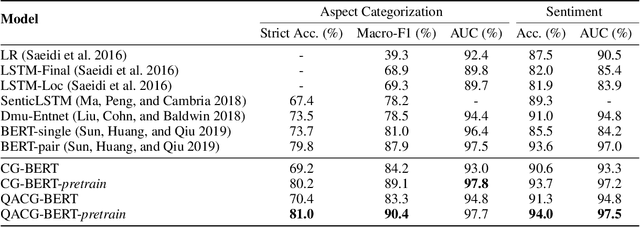


Abstract:Aspect-based sentiment analysis (ABSA) and Targeted ASBA (TABSA) allow finer-grained inferences about sentiment to be drawn from the same text, depending on context. For example, a given text can have different targets (e.g., neighborhoods) and different aspects (e.g., price or safety), with different sentiment associated with each target-aspect pair. In this paper, we investigate whether adding context to self-attention models improves performance on (T)ABSA. We propose two variants of Context-Guided BERT (CG-BERT) that learn to distribute attention under different contexts. We first adapt a context-aware Transformer to produce a CG-BERT that uses context-guided softmax-attention. Next, we propose an improved Quasi-Attention CG-BERT model that learns a compositional attention that supports subtractive attention. We train both models with pretrained BERT on two (T)ABSA datasets: SentiHood and SemEval-2014 (Task 4). Both models achieve new state-of-the-art results with our QACG-BERT model having the best performance. Furthermore, we provide analyses of the impact of context in the our proposed models. Our work provides more evidence for the utility of adding context-dependencies to pretrained self-attention-based language models for context-based natural language tasks.
Structured Self-Attention Weights Encode Semantics in Sentiment Analysis
Oct 10, 2020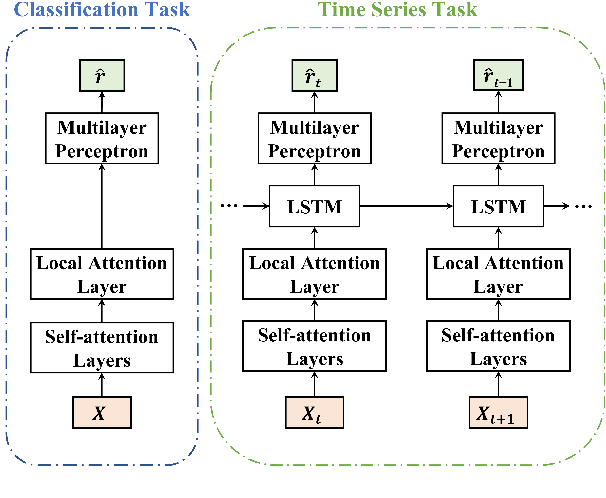
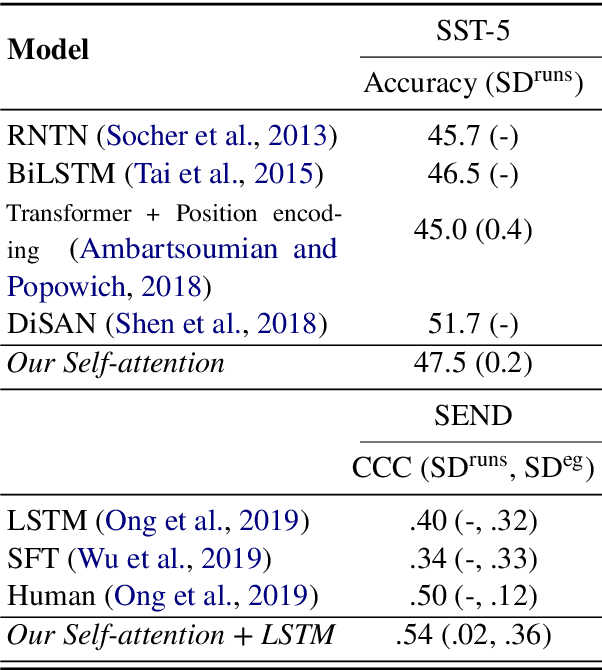
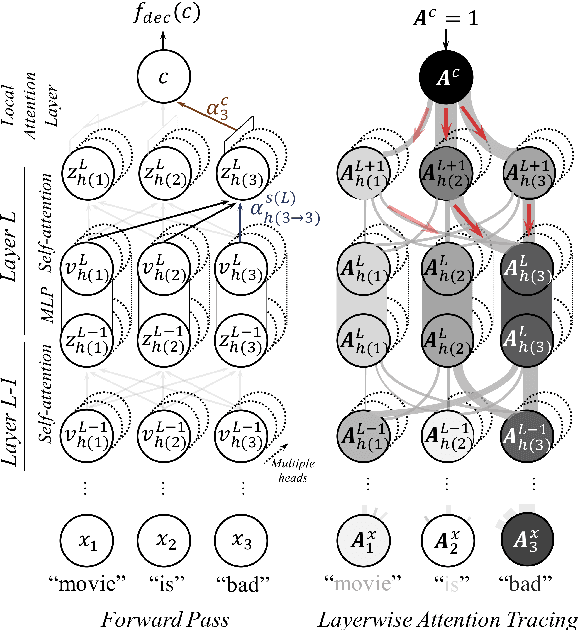
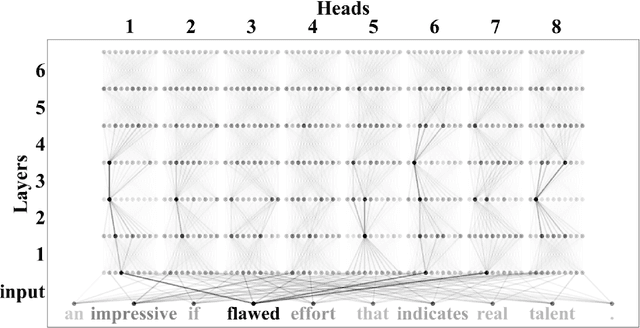
Abstract:Neural attention, especially the self-attention made popular by the Transformer, has become the workhorse of state-of-the-art natural language processing (NLP) models. Very recent work suggests that the self-attention in the Transformer encodes syntactic information; Here, we show that self-attention scores encode semantics by considering sentiment analysis tasks. In contrast to gradient-based feature attribution methods, we propose a simple and effective Layer-wise Attention Tracing (LAT) method to analyze structured attention weights. We apply our method to Transformer models trained on two tasks that have surface dissimilarities, but share common semantics---sentiment analysis of movie reviews and time-series valence prediction in life story narratives. Across both tasks, words with high aggregated attention weights were rich in emotional semantics, as quantitatively validated by an emotion lexicon labeled by human annotators. Our results show that structured attention weights encode rich semantics in sentiment analysis, and match human interpretations of semantics.
Pragmatically Informative Color Generation by Grounding Contextual Modifiers
Oct 09, 2020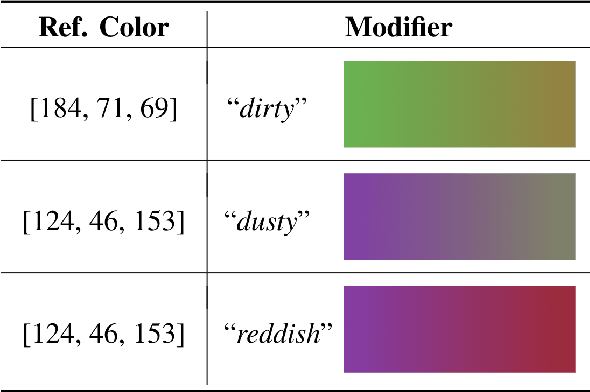
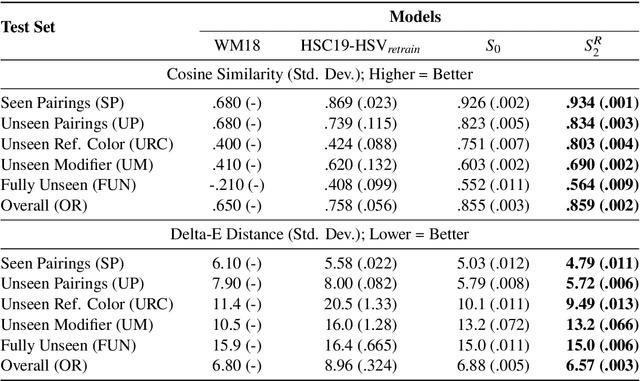
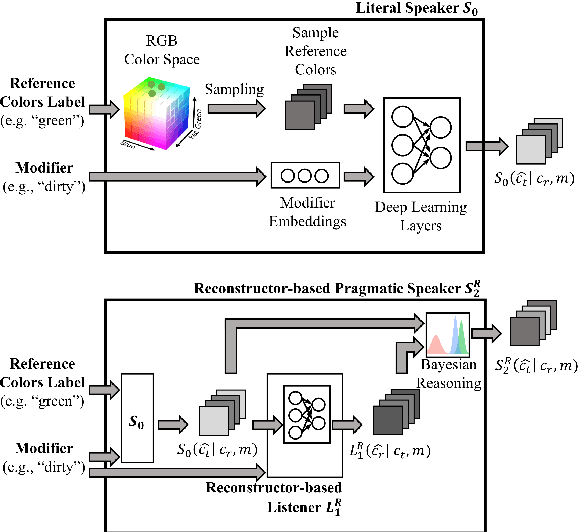
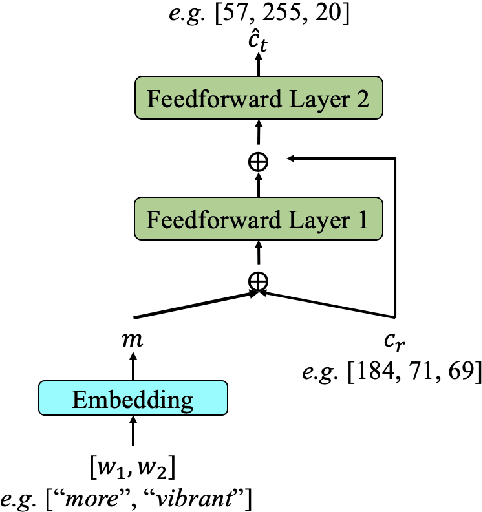
Abstract:Grounding language in contextual information is crucial for fine-grained natural language understanding. One important task that involves grounding contextual modifiers is color generation. Given a reference color "green", and a modifier "bluey", how does one generate a color that could represent "bluey green"? We propose a computational pragmatics model that formulates this color generation task as a recursive game between speakers and listeners. In our model, a pragmatic speaker reasons about the inferences that a listener would make, and thus generates a modified color that is maximally informative to help the listener recover the original referents. In this paper, we show that incorporating pragmatic information provides significant improvements in performance compared with other state-of-the-art deep learning models where pragmatic inference and flexibility in representing colors from a large continuous space are lacking. Our model has an absolute 98% increase in performance for the test cases where the reference colors are unseen during training, and an absolute 40% increase in performance for the test cases where both the reference colors and the modifiers are unseen during training.
Improving Multi-Agent Cooperation using Theory of Mind
Jul 30, 2020

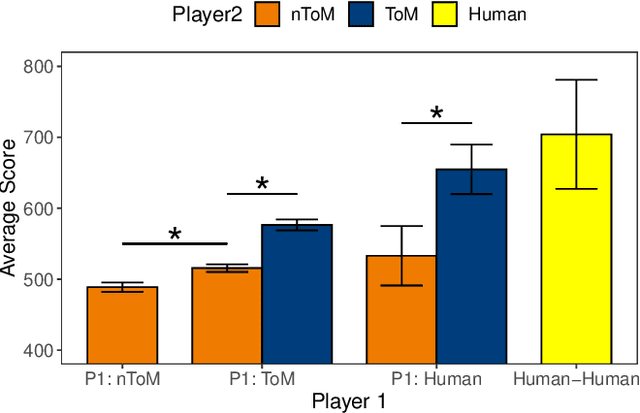
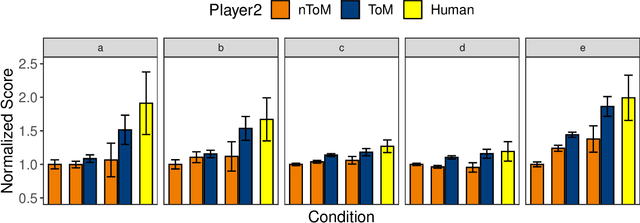
Abstract:Recent advances in Artificial Intelligence have produced agents that can beat human world champions at games like Go, Starcraft, and Dota2. However, most of these models do not seem to play in a human-like manner: People infer others' intentions from their behaviour, and use these inferences in scheming and strategizing. Here, using a Bayesian Theory of Mind (ToM) approach, we investigated how much an explicit representation of others' intentions improves performance in a cooperative game. We compared the performance of humans playing with optimal-planning agents with and without ToM, in a cooperative game where players have to flexibly cooperate to achieve joint goals. We find that teams with ToM agents significantly outperform non-ToM agents when collaborating with all types of partners: non-ToM, ToM, as well as human players, and that the benefit of ToM increases the more ToM agents there are. These findings have implications for designing better cooperative agents.
Modeling emotion in complex stories: the Stanford Emotional Narratives Dataset
Nov 22, 2019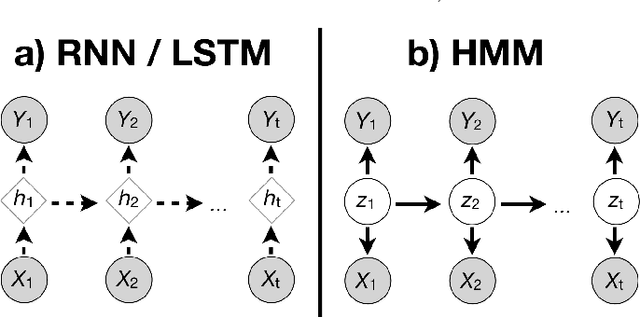
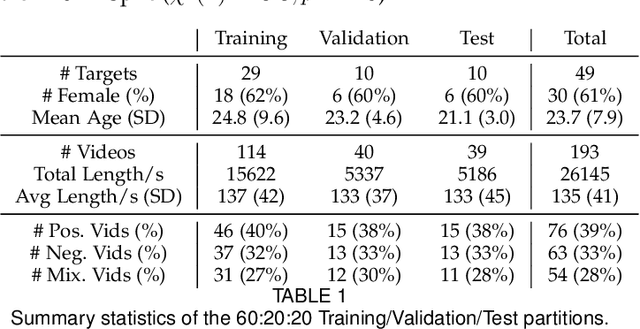
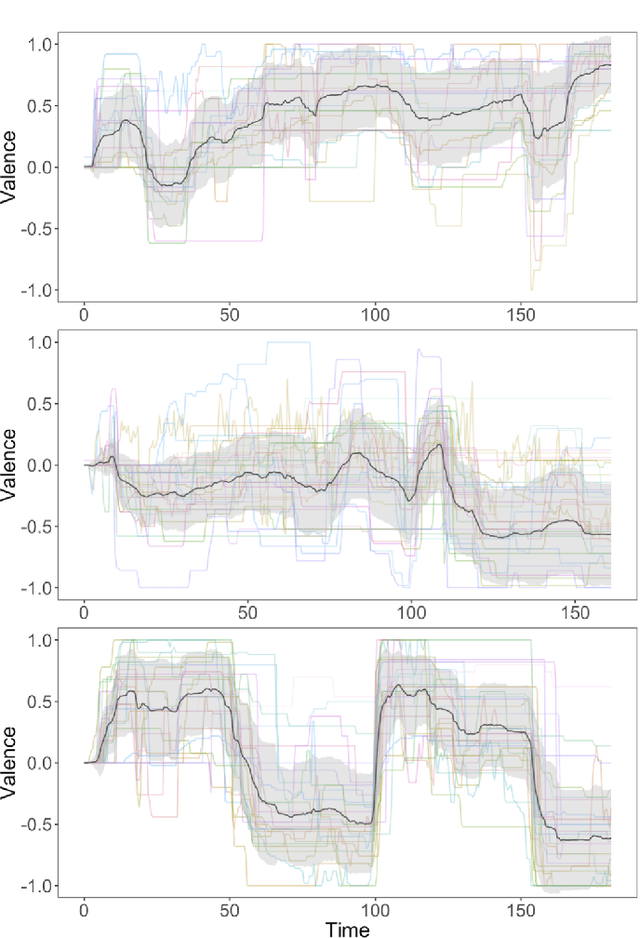
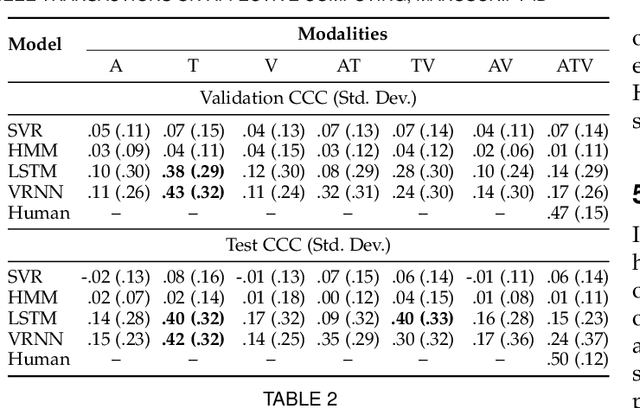
Abstract:Human emotions unfold over time, and more affective computing research has to prioritize capturing this crucial component of real-world affect. Modeling dynamic emotional stimuli requires solving the twin challenges of time-series modeling and of collecting high-quality time-series datasets. We begin by assessing the state-of-the-art in time-series emotion recognition, and we review contemporary time-series approaches in affective computing, including discriminative and generative models. We then introduce the first version of the Stanford Emotional Narratives Dataset (SENDv1): a set of rich, multimodal videos of self-paced, unscripted emotional narratives, annotated for emotional valence over time. The complex narratives and naturalistic expressions in this dataset provide a challenging test for contemporary time-series emotion recognition models. We demonstrate several baseline and state-of-the-art modeling approaches on the SEND, including a Long Short-Term Memory model and a multimodal Variational Recurrent Neural Network, which perform comparably to the human-benchmark. We end by discussing the implications for future research in time-series affective computing.
Robot Capability and Intention in Trust-based Decisions across Tasks
Sep 03, 2019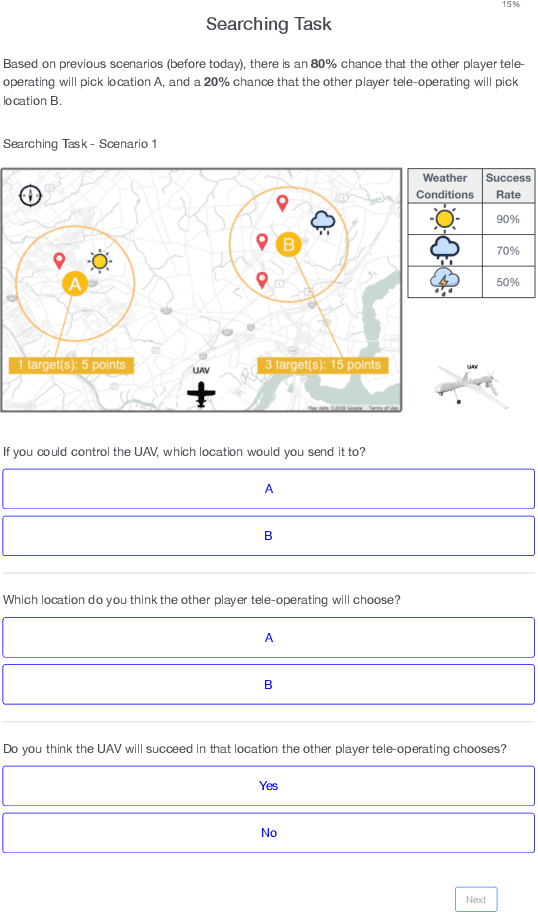
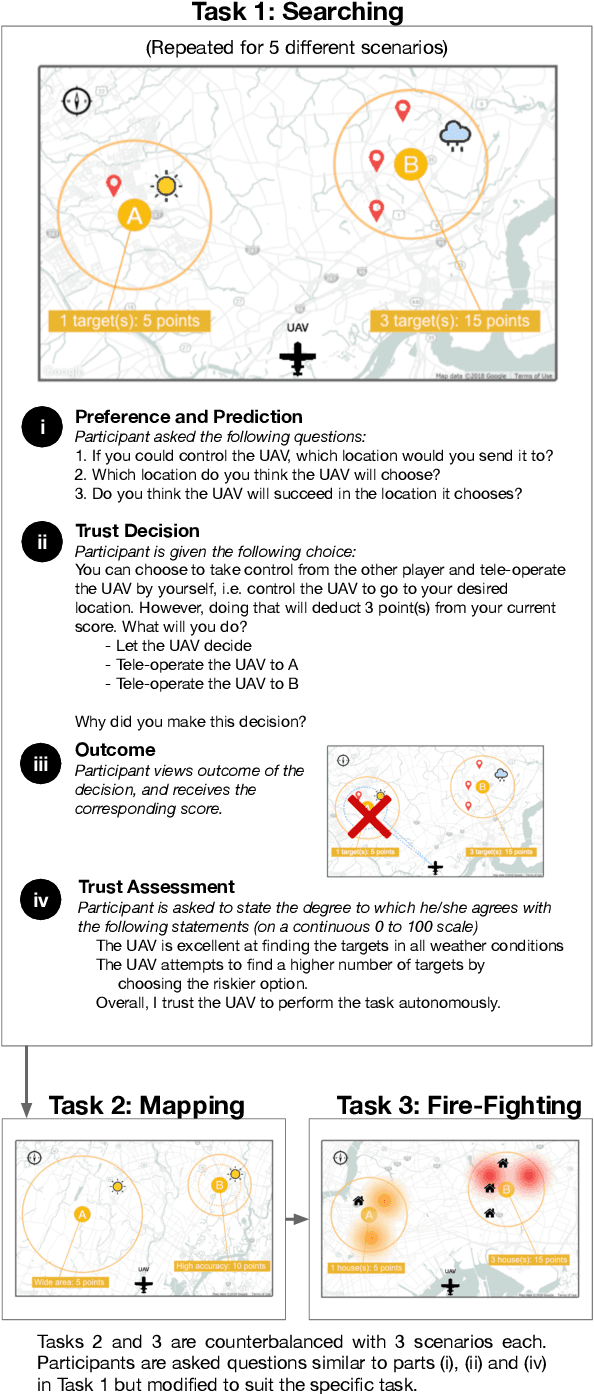
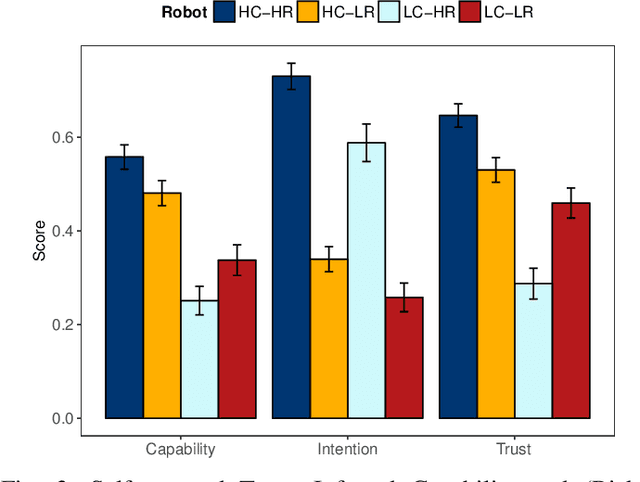
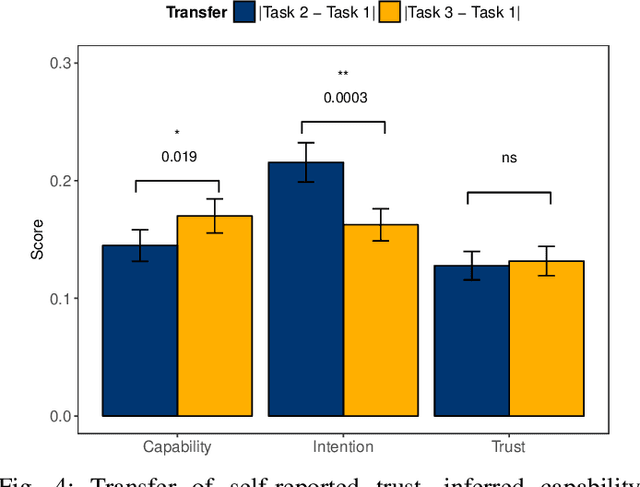
Abstract:In this paper, we present results from a human-subject study designed to explore two facets of human mental models of robots---inferred capability and intention---and their relationship to overall trust and eventual decisions. In particular, we examine delegation situations characterized by uncertainty, and explore how inferred capability and intention are applied across different tasks. We develop an online survey where human participants decide whether to delegate control to a simulated UAV agent. Our study shows that human estimations of robot capability and intent correlate strongly with overall self-reported trust. However, overall trust is not independently sufficient to determine whether a human will decide to trust (delegate) a given task to a robot. Instead, our study reveals that estimations of robot intention, capability, and overall trust are integrated when deciding to delegate. From a broader perspective, these results suggest that calibrating overall trust alone is insufficient; to make correct decisions, humans need (and use) multi-faceted mental models when collaborating with robots across multiple contexts.
 Add to Chrome
Add to Chrome Add to Firefox
Add to Firefox Add to Edge
Add to Edge